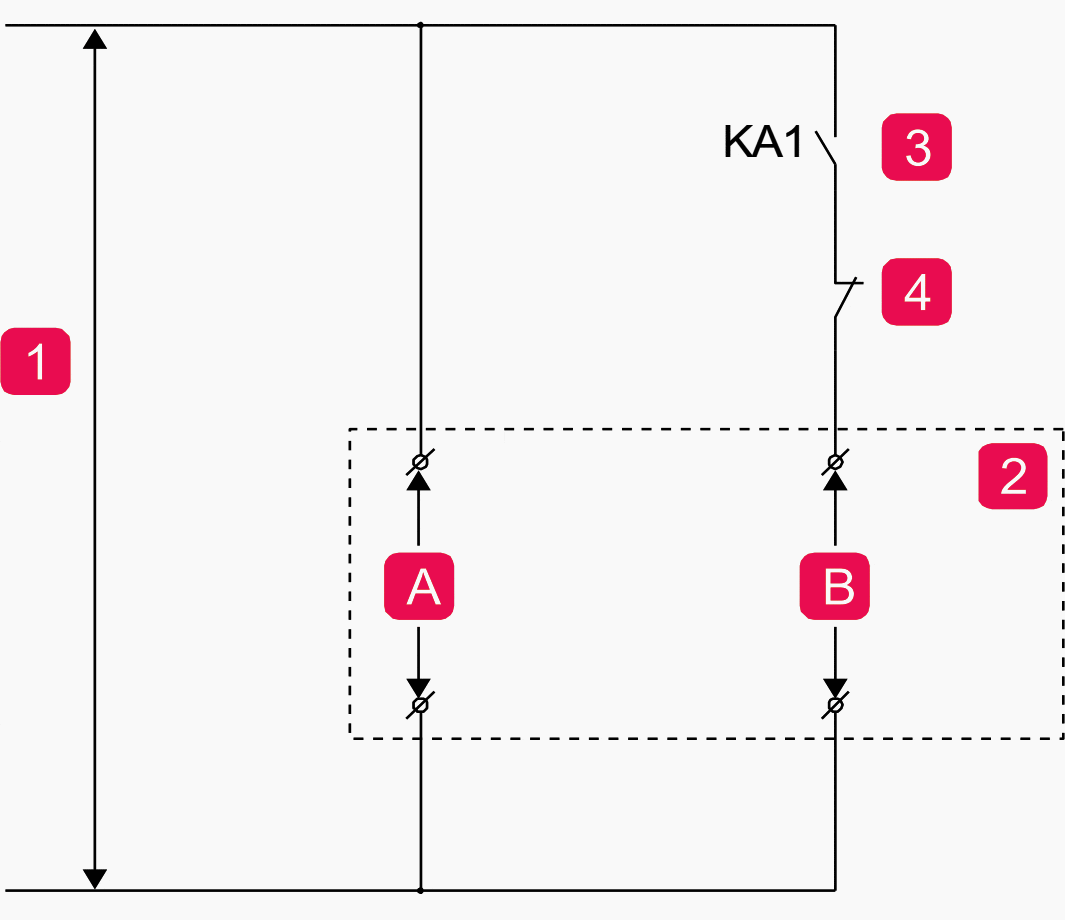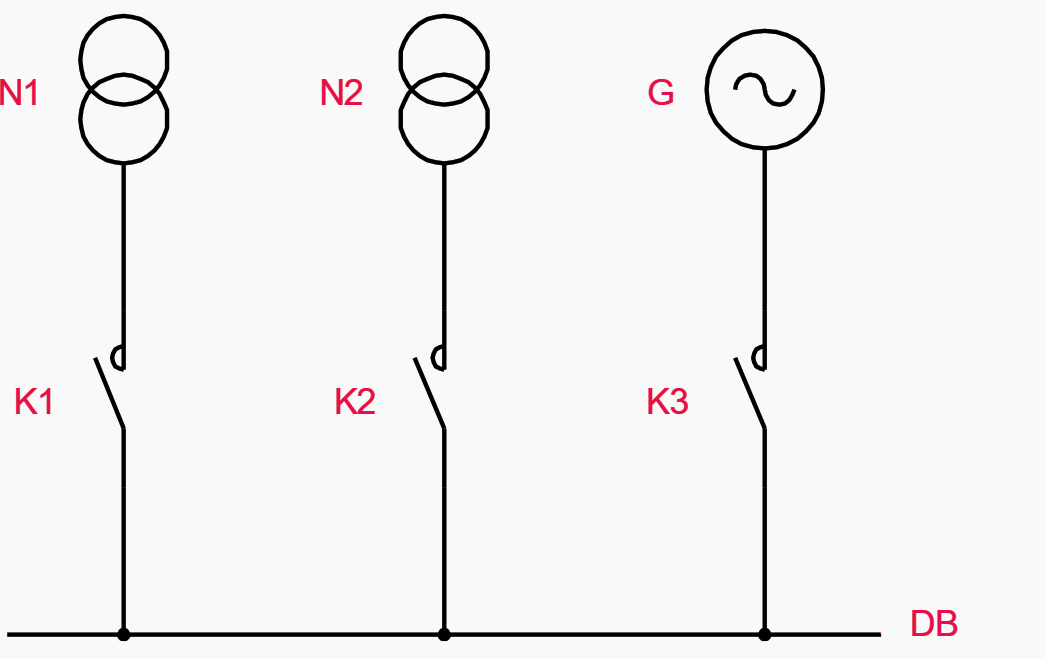
15 Nov Atomatic changeover systems in medium voltage networks
Automatic transfer switch (ATS)
In medium voltage distribution networks, it is important to maintain a high level of reliability. Industry relies on the continuous operation of critical plant, which requires no or little disruption to the electrical supply. There are various methods for building redundancy of supply into a system.
The most commonly used methods are a dual transformer fed supply and/or a standby generator sized to keep critical plant online. Automatic changeover systems are designed to monitor and maintain continuous supply.
Today’s technology allows the supervision and control of an entire distribution system from a single controller, referred to as an automatic transfer switch (ATS) or automatic changeover unit (ACU). Although there are a wide range of products available, they all have the same primary function.
The equipment monitors 3-phase voltages on all power sources. Power supply sources are often prioritized and if any phase voltage on the primary power source falls outside a predetermined range for a specific amount of time, the power source is switched over to a back-up supply. Once the primary power source is re-established, the power source is switched back to the primary power source.
In medium voltage systems, switching is performed using either contactors or circuit breakers. Most ATS controllers can control both types of switching devices.
Automatic changeover systems range from simple main/standby set-ups to highly complex distribution systems and this is where the selection of an appropriate ATS controller is important. Systems can be operated in automatic or
manual mode.
- In AUTO mode, supervision and power source switching is carried out entirely by the ATS controller.
- In MANUAL mode, power source switching is carried out by manual selection via the ATS controller.
NOTE! For safety reasons, manual mode cannot be used in certain network configurations.
ATS Switching Devices
Typical Circuit Breaker Control
This information focuses on the double command operated (DCO) method of circuit breaker control. DCO control uses normally-open momentary contacts (ie pushbuttons) or a bistable relay to operate the shunt closing and opening coils. Some circuit breakers use voltage fed open and close command signals while others use volt-free signals.
Medium voltage circuit breakers can be vacuum or gas (SF6) insulated, with magnetic or motor charged spring operation.
Here are some examples of various double command operated (DCO) control methods:
Wiring diagram #1
Motor operated circuit breaker using voltage fed open and close command signals via momentary contact pushbuttons

Where:
- Auxiliary supply
- Motor (spring charge)
- Close shunt coil
- Open shunt coil
- Circuit breaker controller
- External trip contact (eg. from motor protection relay)
Wiring diagram #2
Magnetic operated circuit breaker using volt-free open and close command signals via bistable relay contacts

Where:
- Auxiliary supply
- Circuit breaker control (open/close)
- Circuit breaker controller
- External trip contact (eg from motor protection relay)
- Control supply
- Command inputs (common, close, open)
Go back to Table of Contents ↑
Typical Contactor Control
Medium voltage contactors genarlly have two methods of control:
- Single command operated control (SCO) – this requires a permanent signal to close and maintain the contactor in the closed position. Removal of the control signal will open the contactor.
- Double command operated control (DCO) – this requires two separate momentary contacts; one for the close command and one for the open command. The DCO control method typically uses normally open, spring return pushbuttons for both the open and close commands.
Typically, command signals require an external voltage source and the contactor controller itself requires a separate auxiliary voltage source. Depending on the contactor make and model, electrical options are available.
Some examples are shown in Table 1 below:
Table 1 – Electrical options of a contactor and their descriptions
| Electrical option | Description |
| Undervoltage shunt trip | Only used with DCO control. |
| Lock-out solenoid | Needs to be externally energised before contactor main poles can be electrically operated. |
| Racking solenoid | Needs to be externally energised before a withdrawable contactor can be moved between the test and service positions. |
| Auxiliary contacts | Indicate the electrical state of the main contactor poles. |
| Racking contacts | Indicate whether a withdrawable contactor is in the service or test position. |
| Fuse blow indicator contacts | Indicate fuse condition. Operated by striker pin and only available on contactors with integral medium voltage fuses |
The following examples show typical contactor control circuits:
Wiring diagram #1
Single command operated contactor control (typical)

Where:
- Auxiliary supply
- Contactor controller
- Control signal (maintained)
- External trip contact (eg from motor protection relay)
- Control supply
- Command input
Wiring diagram #2
Double command operated contactor control (typical)

Where:
- Auxiliary supply
- Contactor controller
- External trip contact (eg. from motor protection relay)
- Control supply
- Close input
- Open input
Go back to Table of Contents ↑
Operating modes in automatic changeover systems
The following are examples of common operating modes in automatic changeover systems. Most ATS controllers can be programmed to operate in any one of these modes.
N1+N2 mode

AUTO mode with line priority:
N1 is the prioritized power source and, if healthy, will always supply the receiving network (DB). If N1 is lost, the controller switches over to power source N2. The controller switches back to N1 once it has been re-established.
AUTO mode without line priority:
The first power source verified as healthy will supply the receiving network (DB). If this power source is lost, the other power source will be selected and remain as the supply as long as it is healthy.
If both power sources are lost, both sources N1 and N2 are isolated from the receiving network (DB).
MANUAL mode:
Select N1 or N2 as the power source.
Go back to Table of Contents ↑
N1+G mode

AUTO mode:
N1 is the prioritized power source and, if healthy, will always supply the receiving network (DB). If power source N1 is lost, the controller commands the standby generator to start. Once the generator is at correct voltage and frequency, power source G is switched in to supply the receiving network (DB). The controller switches back to N1 once it has been re-established.
MANUAL mode:
Select N1 or G as the power source.
Go back to Table of Contents ↑
N1+N2+N3 mode

AUTO mode with line priority:
N1 is the prioritized power source and, if healthy, will always supply the receiving network (DB). If N1 is lost, the controller switches over to power source N2. If power source N2 is lost, the controller switches over to power source N3.
The controller switches back to N1 once it has been re-established.
AUTO mode without line priority:
The first power source verified as healthy will supply the receiving network (DB). If this power source is lost, the next healthy power source is selected and will remain as the supply as long as it is healthy. The order of power source selection is normally predetermined, eg N1 then N2 then N3.
MANUAL mode:
Select N1 or N2 or N3 as the power source.
Go back to Table of Contents ↑
N1+N2+G mode

AUTO mode with line priority:
N1 is the prioritized power source and, if healthy, will always supply the receiving network (DB). If N1 is lost, the controller switches over to power source N2. The controller switches back to N1 once it has been re-established.
If both power sources N1 and N2 are lost, the controller commands the standby generator to start. Once the generator is at correct voltage and frequency, power source G is switched in to supply the receiving network (DB). The controller switches back to the first re-established power source N1 or N2.
AUTO mode without line priority:
The first power source verified as healthy will supply the receiving network (DB). If this power source is lost, the other power source will be selected and remain as the supply as long as it is healthy.
If both power sources N1 and N2 are lost, the controller commands the standby generator to start. Once the generator is at correct voltage and frequency, power source G is switched in to supply the receiving network (DB). The controller switches back to the first re-established power source N1 or N2.
MANUAL mode:
Select N1 or N2 or G as the power source
Go back to Table of Contents ↑
N1+N2+S mode

AUTO mode:
Providing power sources N1 and N2 are healthy, N1 will supply network DB1 and N2 will supply network DB2. Bus coupler S will remain open.
If power source N1 is lost, this supply is isolated and bus coupler S is closed. Power source N2 now supplies networks DB1 and DB2. Once power source N1 is re-established, bus coupler S is opened and N1 will supply network DB1 and N2 will supply network DB2.
If power source N2 is lost, this supply is isolated and bus coupler S is closed. Power source N1 now supplies networks DB1 and DB2. Once power source N2 is re-established, bus coupler S is opened and N1 will supply network DB1 and N2 will supply network DB2.
MANUAL mode:
Select N1 and N2 as power sources with bus coupler S open. Select power source N1 with bus coupler S closed and power source N2 isolated. Select power source N2 with bus coupler S closed and power source N1 isolated.
Go back to Table of Contents ↑
Source: Medium voltage guide by Aucom
[ad_2]
Source link


No Comments